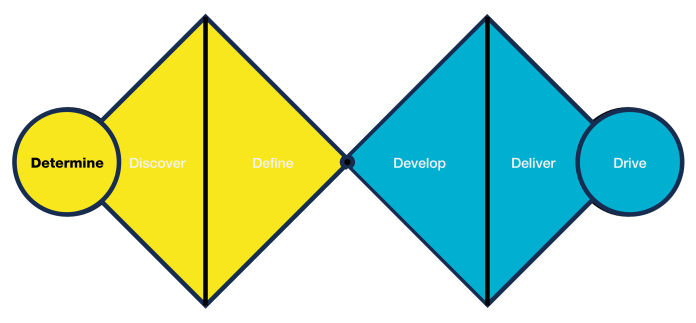English | Chinese (繁體中文)
The Role of This Tool in the First Phase of the Design Thinking method

The primary aim of the “Determining Major Changes and Challenges” phase is to understand the broader context and identify key changes and challenges that are relevant to the problem. The Knowns and Unknowns framework assists by helping to clarify what is already understood about the problem (the knowns) and what still needs to be discovered (the unknowns).
The framework helps in identifying gaps in knowledge and understanding, and these gaps often represent the major challenges that need to be addressed. It also helps to guide subsequent research and inquiry by highlighting the areas where more information is needed.
It exemplifies the human-centered approach of Design Thinking as it begins with understanding the user and their needs. By focusing on both what is known and unknown about the user and their context, it ensures that the design process remains grounded in the realities of the people we are designing for.
Moreover, this tool encourages curiosity and a willingness to learn more about the user, their needs, and their challenges. By identifying and seeking to understand the unknowns, it fosters a deep understanding of the user, which is a key aspect of the human-centered approach. This ensures that the solutions developed are not only innovative but also meaningful and valuable to the user.
The Procedure for Using This Design Thinking Tool
Step 1: Identify Knowns: Start by listing what you already know about the problem, the context, the users, and their needs. This includes facts, data, insights, or assumptions that are already established.
Step 2: Identify Unknowns: Identify what you don’t know or what is uncertain. These could be questions you have, areas where you lack information or aspects of the problem that are not yet understood.
Step 3: Analyze and Prioritize: Analyze the knowns and unknowns, and prioritize them based on their relevance to the problem. Which knowns are most important? Which unknowns, if resolved, could have the most significant impact on understanding the problem?
Step 4: Plan Further Research: Based on the prioritized unknowns, plan further research or inquiry to gather the needed information.
The Worksheet of This Tool

Note: In order to enhance the efficiency and effectiveness of business innovation and digital transformation projects, we have joined forces with data and digital experts to launch Data-Driven Design Thinking Tools and Technologies. Details have been announced in the seminar of 「數據驅動的設計思維,更快更準實現創新成果」. If you need to revisit the seminar, please click on the following link: https://www.innoedge.com.hk/data-driven-design-thinking-2023







![[Class Recap] Empowering Your Creativity and Innovation Power](https://i0.wp.com/www.innoedge.com.hk/wp-content/uploads/2024/04/20240329_180728-scaled.jpg?resize=218%2C150&ssl=1)
![[Class Recap] Developing Sustainable Business Models through Systems Thinking](https://i0.wp.com/www.innoedge.com.hk/wp-content/uploads/2024/04/20240328_181754-scaled.jpg?resize=218%2C150&ssl=1)
![[Class Recap] Creating Wonderful User Experience through Customer Journey Design](https://i0.wp.com/www.innoedge.com.hk/wp-content/uploads/2024/04/20240328_131024-scaled.jpg?resize=218%2C150&ssl=1)










